September - Wisdom from the Trees
/Tree of the month • River Birch - Betula nigra
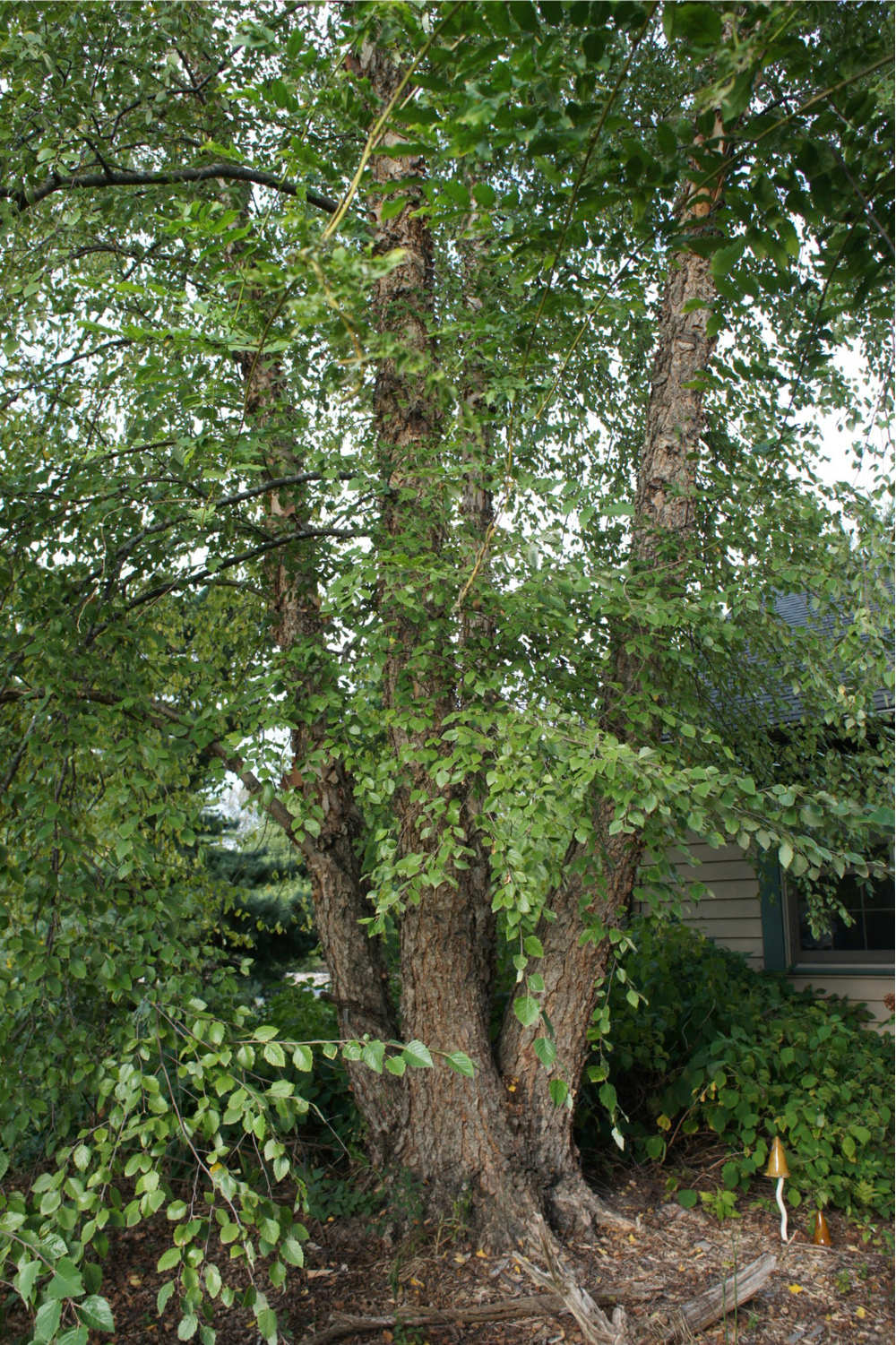 River Birch by Lesley Bruce SmithThe River Birch is one of the few Birch species that are actually native to the warmer climates of the southern tip of Lake Michigan. We love it for its amazing creamy cinnamon colored bark which adds so much winter interest in the leafless seasons of the year. We like to plant these trees in clumps and so they are propegated this way in our nurseries. A five trunked birch tree is actually 5 different trees that were gathered together as infants and forced to grow as a unit.
River Birch by Lesley Bruce SmithThe River Birch is one of the few Birch species that are actually native to the warmer climates of the southern tip of Lake Michigan. We love it for its amazing creamy cinnamon colored bark which adds so much winter interest in the leafless seasons of the year. We like to plant these trees in clumps and so they are propegated this way in our nurseries. A five trunked birch tree is actually 5 different trees that were gathered together as infants and forced to grow as a unit.
Birch trees were considered sacred by the aboriginal peoples of North America and the Chippewa peoples were very clever in the use of it’s bark, creating cups, bowls, kettles, serving dishes, coffins, wigwams, sleds, dolls and many other important items for daily use. Birch trees were even used for setting broken bones. 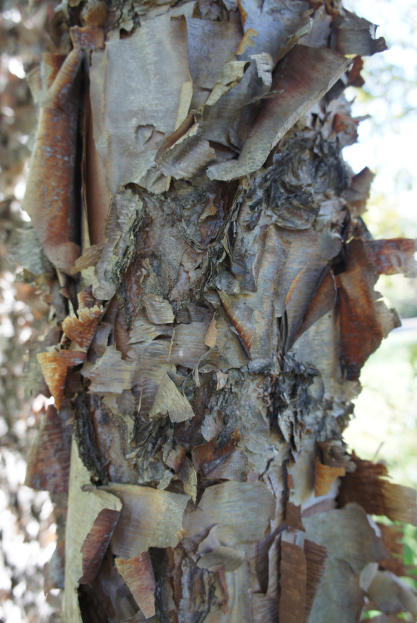
Birch trees prefer a more acidic and well drained soil and so they often suffer from chlorosis or yellowing of the leaves, due to the unavailability of nutrients which are tied up in our alkaline clay soils. We also often plant them next to our homes, adding to this problem, because construction disturbed, concrete filled soils are extremely alkaline causing all kinds of problems for our friends the birch trees.
It helps to offset these problems by 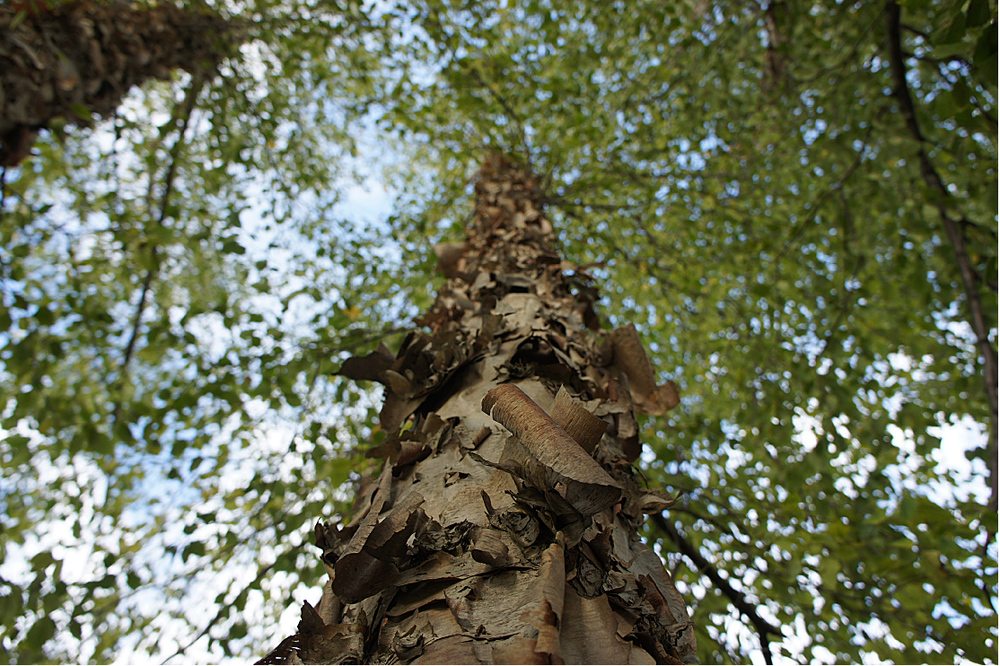 keeping these trees mulched out to the branch spread in an attempt to return their surrounding soils to a more acidic environment.
keeping these trees mulched out to the branch spread in an attempt to return their surrounding soils to a more acidic environment.
Biochemicals from the birch are found in almost every home of the Western world in the form of aspirin. Over 100 BILLION aspirin pills are consumed annually around the world. So the next time you take two, you can thank a birch tree.
Fall Colors
Backyard Wisdom by Gilbert A Smith
ISA Master Arborist
A description of how fall color appears by master arborist Gilbert A Smith and cert. Arborist Lesley Bruce Smith of Arborsmith, craftsmen in the care of trees and shrubs. This video explains what triggers fall color and what creates the showy displays in an easy to understand way.
Poison Ivy
Mother Nature's Moment by Lesley Bruce Smith
ISA Certified Arborist
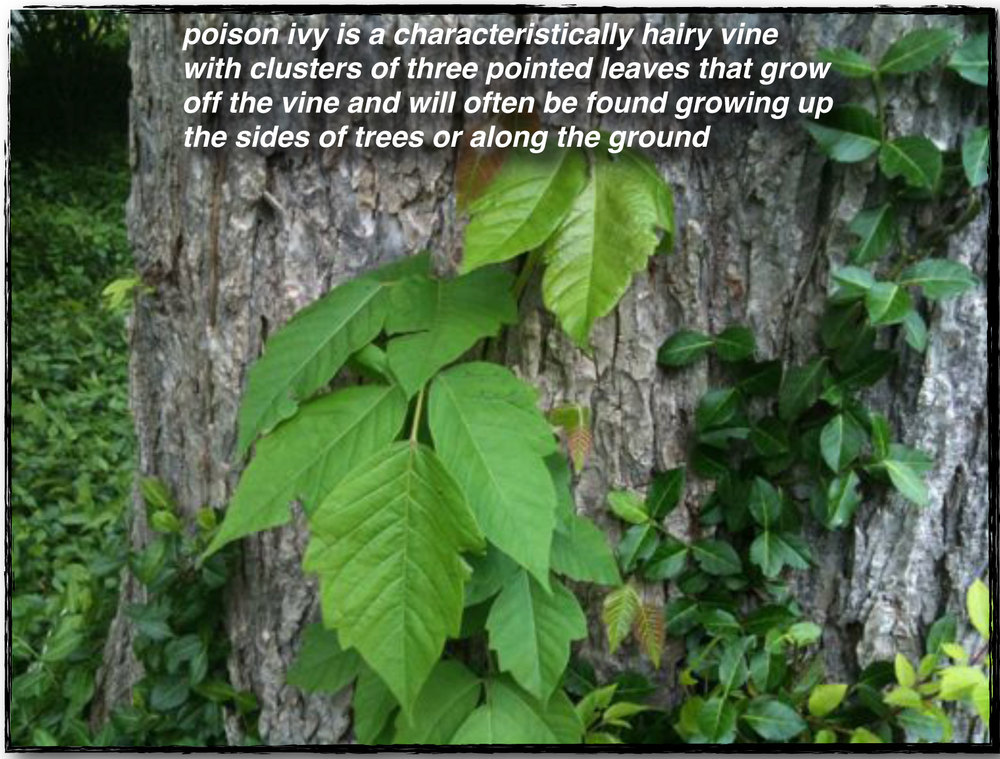 This season finds many of us out in our gardens or in local forest preserves enjoying fall color. Since we spend a good deal of time in your yards, as well, we know that there is a lot of poison ivy out there. As professionals, we realize that the best way to avoid this often agonizing malady is to be able to identify and stay clear of the plant.
This season finds many of us out in our gardens or in local forest preserves enjoying fall color. Since we spend a good deal of time in your yards, as well, we know that there is a lot of poison ivy out there. As professionals, we realize that the best way to avoid this often agonizing malady is to be able to identify and stay clear of the plant.
You may not know that humans react to the oils in poison ivy (Toxicodendron radicans) and that our contact with it does not have to be direct. If our pets walk through it and we touch them or we walk through it and then touch our shoes or touch any thing that has been in contact with it, the oil can rub off and cause a reaction. What we have also learned, from painful experience and from our doctor, is that our skin cells actually have a memory and when we are exposed to poison ivy over long periods our reactions become more intense. When we get a particularly bad case, it becomes somewhat systemic and can pop up as big blistered sores on other places of our body....yuk!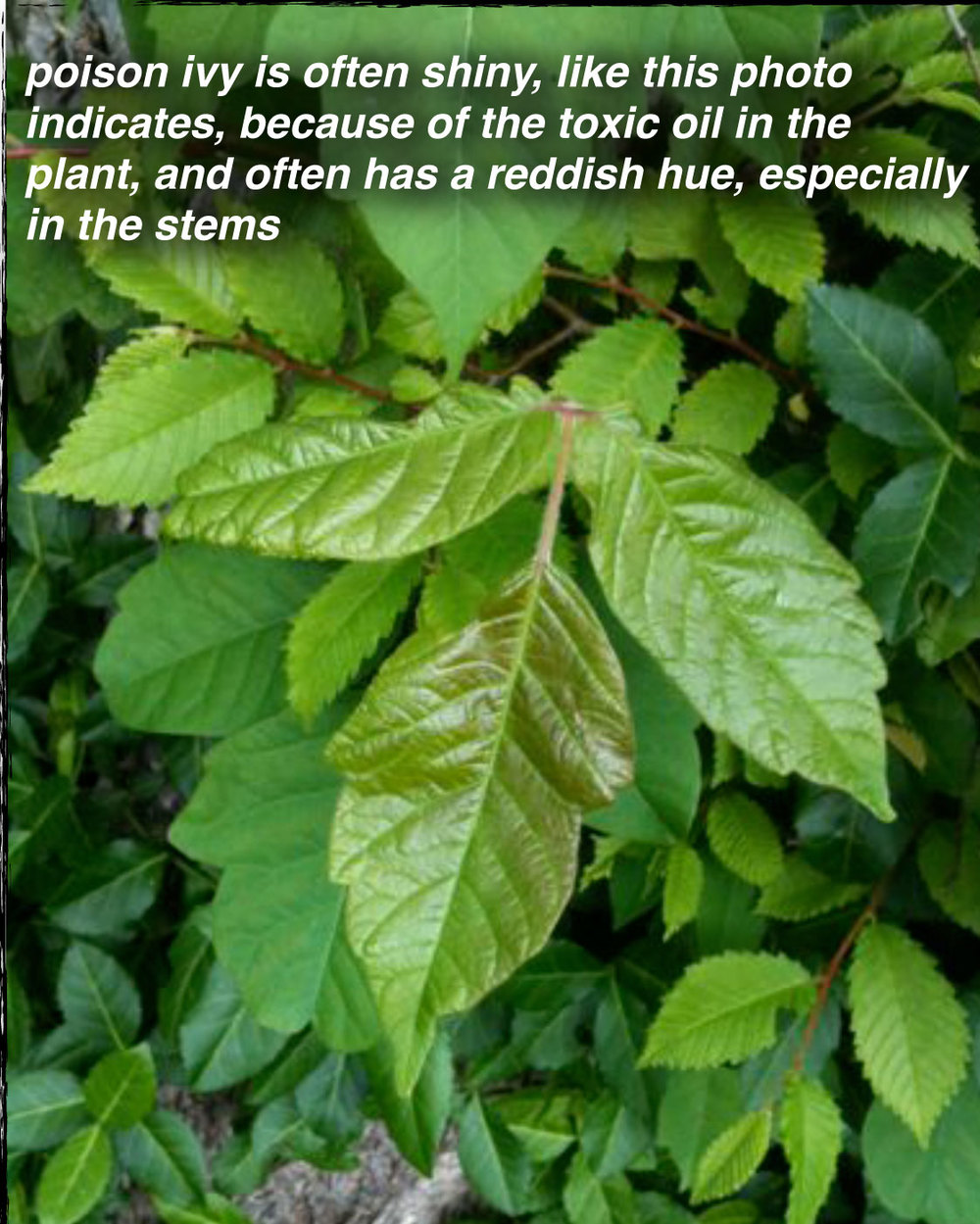
The good news is that when you know how to identify and stay clear of poison ivy you can stay rash free. Our sons, avid outdoorsmen, who are now in their 20’s and who learned to identify poison ivy as very small children have never had a case of it because their exposure has been so limited.
Avoid the painful experiences of poison ivy exposure by eliminating it in your yards and gardens by cutting vines and using Glyphosate (generic original Round-Up) weed killer, carefully following manufacturer’s labeling. Whenever working around poison ivy cover your exposed skin by wearing long pants and long sleeve shirts and be careful to remove and wash them immediately using hot water and good laundry soap. Then bathe using laundry detergent or Fels Naptha soap thoroughly cleansing your skin, both areas that were exposed or unexposed. The oil can remain viable on your tools, gloves, shoes and clothes for days afterward! When you know what poison ivy looks like you can stay away from it on the trails and forest preserves and in your own back yard.
If you know your skin has been in contact with poison ivy you can greatly lessen or completely avoid a rash by washing the affected area using laundry detergent within 1/2 hour of exposure. The laundry soap or Fels Naptha soap are the only soaps we know of that have significant surfactants to disperse the oil of poison ivy. Caution: hand or dish soap will make it worse!
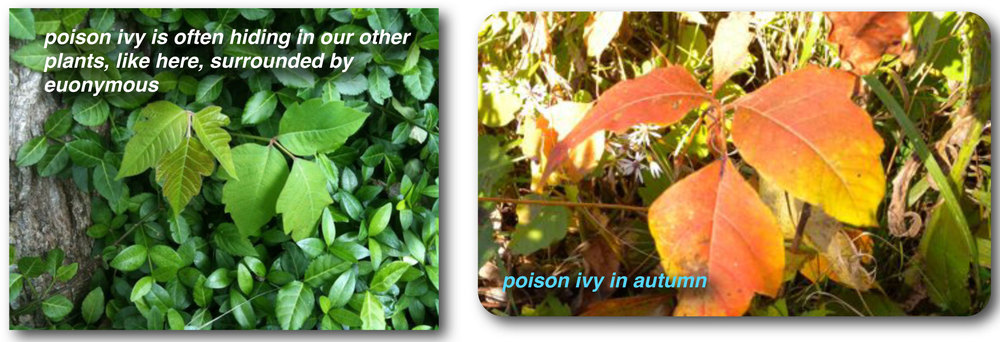 Poison Ivy by Lesley Bruce Smith
Poison Ivy by Lesley Bruce Smith


